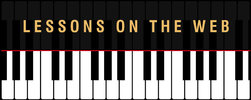|
Today we’re going to dig into some of the basic aspects of rhythm that you need to know and think about before trying to tackle them at the piano. The reason we look at these before we try them in piano playing because it helps us to grasp each concept in our understanding before we try to perform it in our fingers at the piano. It helps to do this anytime we start something new on the piano…go over it mentally first…then teach your body to do it. Rhythm is essentially the timing of all the notes that we have to play in a piece or scale. Rhythm tells us how many notes to play in a measure and how to count them. Rhythm groups note durations together to make up the needed beats in each measure.
The different concepts that we will learn about today are note durations, tempo, time signatures, and measures. Note durations are the number of beats that different kinds of notes get. For example:
Each time we play one of these notes we need to play it for the total number of beats that it is supposed to get. If we have a whole note then we have to count and play it for 4 full beats…not any less or any more than 4. Make sure to watch the video at the end to see what each of these notes look like and how you play them on the piano while counting the beats. Tempo is how fast or slow we play these notes above.
Measures in music are the bar lines on the music staff that contain group of notes. Each area in between the bar lines is called a measure.
Take some time to just look at piano music and locate the measures, time signature and what types of note durations you have in your piece before you start.
The following video gives you visuals of each of these different types of note durations, plus I count through each of them and play them on the piano so you can hear the different lengths with the correct number of counts. I’ll also show you what measures look like in sheet music and where to find your time signature. Take time and learn each of these concepts fully before we continue digging into music theory topics here and on my YouTube channel. Working through these will give you a very solid foundation to build upon in the near future. If you like my tips and lessons, you will love the courses over on my website. Whether you are a beginner looking to get a solid foundation to build on or you are looking to take your existing skills to that next level, the online music courses on my website https://www.pianolessonsontheweb.com will help you do just that.
1/14/2024 07:56:30 am
In what ways does a good grasp of basic rhythm contribute to musical expressiveness on the piano? Greeting : <a href="https://sas.telkomuniversity.ac.id/en/">Telkom University</a>
Reply
Leave a Reply. |
AuthorMost blogs written by Archives
June 2020
Categories
All
|

 RSS Feed
RSS Feed